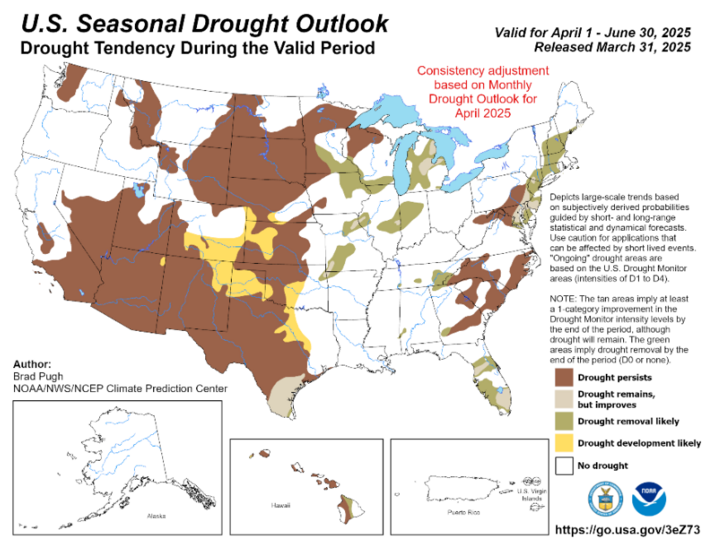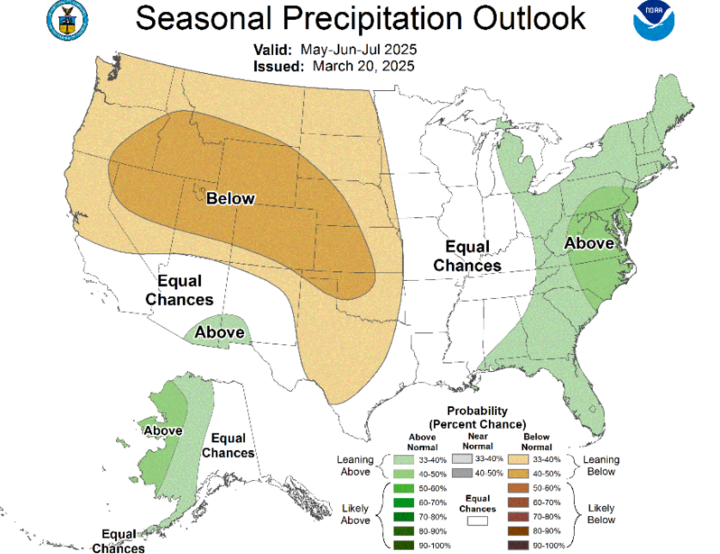Looking ahead to the 2025 grazing season
Jerry Volesky
2024 weather and forage production at GSL
Total annual precipitation during 2024 at the Gudmundsen Sandhills Lab (GSL) was 17.94 inches which was 1.89 inches below the long-term average (Table 1). While April and May precipitation was a little below average, a wet June (5.37”) contributed to excellent pasture growth. Overall, late summer and fall were quite dry.
In 2024, overall upland range forage production at GSL was 20% higher than the long-term average (Table 2). Warm-season grass production was higher than the long-term average in response to the wet June and July. Cool-season grass and sedge production was below the average.
| Table 2. Forage production of upland range at GSL by plant functional group, 2024. | |||||
| Cool-season grasses & sedges | Warm-season grasses | Forbs | Shrubs | Total |
| - - - - - - - - - - - - - - - - - - - - - - lb/acre - - - - - - - - - - - - - - - - - - - - | ||||
2024 | 477 | 1228 | 350 | 84 | 2139 |
2004 – 2024 average | 627 | 870 | 232 | 45 | 1778 |
2025 Spring and Early Summer Outlook
The U.S. Seasonal Drought Outlook through June suggests continued drought conditions for most of Nebraska (Figure 1).

The NOAA long-term precipitation outlook for May, June, and July 2025 predicts below normal precipitation during that period for all of Nebraska. (Figure 2).

2025 Grazing – Plan for Dry Conditions
As always, putting together a grazing plan for 2025 should include the possibility of dry conditions. Some key points for pasture and livestock management during drought include:
- Evaluate 2024 grazing records with emphasis on:
- Time of grazing
- Stocking rate
- Amount of residual herbage
- Outline a (flexible) plan for the entire 2025 season.
- If you use rotational grazing with several pastures, remember to change the sequence in which you rotate through the pastures to avoid grazing the same pasture during the same time period in consecutive years.
- Make culling decisions early
- Delay turn out to summer pasture to allow the grass to accumulate more growth
- Stretch grass with supplemental feed
- Early weaning
- Consider planting annual forages for extra feed
Table 1. Monthly precipitation data for GSL and departure from average during 2024.
| ||
Month | Precipitation (inches) | Departure from average |
January | 0.48 | 0.16 |
February | 1.02 | 0.57 |
March | 1.02 | 0.19 |
April | 1.83 | - 0.22 |
May | 2.58 | - 0.74 |
June | 5.37 | 1.94 |
July | 3.19 | 0.12 |
August | 1.16 | - 1.03 |
September | 0.12 | - 1.62 |
October | 0.07 | - 1.15 |
November | 0.94 | 0.41 |
December | 0.16 | - 0.15 |
Total | 17.94 |
|